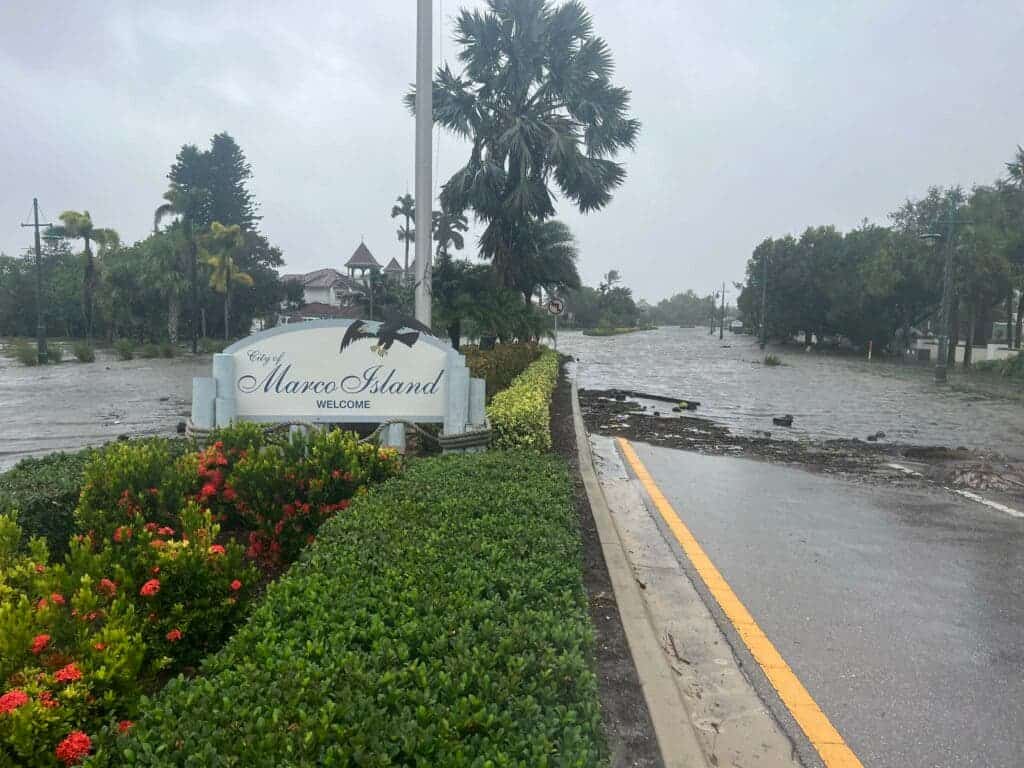Climate change added at least 10% more rainfall to Hurricane Ian, a study done immediately after the storm shows. The research, which isn’t peer-reviewed yet, compared peak rainfall rates during the storm to about 20 computer scenarios of a model with Hurricane Ian’s characteristics in a world with no climate change.

The hurricane has caused widespread damage and at least 85 deaths since crushing into Florida last week, tearing cities with winds that reached 150 mph and flooding many residential areas. Over two million people were left without power and in some areas, Ian produced once in a thousand years rainfall events according to data from the National Oceanic and Atmospheric Administration.
Much of the damage has been due to the torrential rainfall, with the new study finding that the heating of the atmosphere and the ocean due to human activity has added to the intensity of these downpours. “The real storm was 10% wetter than the storm might have been,” Michael Wehner, study co-author and climate scientist, told AP.
Wehner and Kevin Reed, a climate expert at Stony Brook University, had published earlier this year a study looking at 2020 hurricanes and found their rainiest three-hour periods were over 10% wetter than in a world without climate change. Now, the two researchers decided to use the same attribution technique for the recent Hurricane Ian.
Looking into Hurricane Ian
A rule of thumb for hurricane physics is that for every extra degree of warmth Celsius, the air in the atmosphere can hold 7% more water. Last week the Gulf of Mexico was 0.8 degrees warmer than normal. This should have meant 5% more rain but Ian doubled that — and while 10% may not seem a lot, 10% of 20 inches is two inches – and that is a lot of rain.
“That sort of increase in rainfall isn’t small when it’s on top of an already intense storm. It can really have significant effects, as we’ve seen with the extensive rainfall across Florida. It has had a widespread effect,” Reed told the Guardian. “If you’ve got 1ft in rainfall over a day, 10% more adds an inch or so more, which is a lot in itself.”
Scientists are confident that climate change is increasing rainfall rates (how hard the rain is falling) and the amount of rain a storm can produce. It’s also making storms stronger and pushing them to intensify faster. Hurricane Ian strengthened fast as it approached Florida, going from Category 3 to Category 4 in just a matter of hours.
When Ian made landfall with winds of 150 mph, it tied 2004’s Hurricane Charley as the strongest storm to make landfall on the best coast of Florida. The rapid intensification (a hurricane’s wind strengthening fast over a short period of time) is something seen as rare but it’s becoming more likely as temperatures increase due to climate change.
“We are seeing much clearer indicators in these events, for sure. It’s a good reminder that while we’ve had a relatively quiet hurricane season until this storm, we still have two months of the season left and we need to be really prepared,” Reed said. “The reality is that climate change is here, and it’s altering events here and around the world.”









